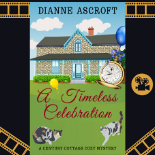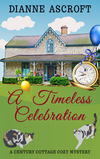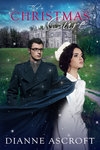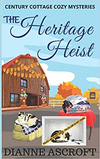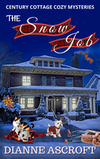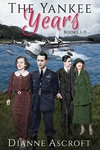Today Jane Davis is visiting Ascroft, eh? to tell us about her latest novel, An Unknown Woman.
 Let me tell you a little bit about Jane (I cheated – I got all of this from her biography!): Jane lives in Carshalton, Surrey with her Formula 1 obsessed, star-gazing, beer-brewing partner, surrounded by growing piles of paperbacks, CDs and general chaos. She spent her twenties and the first part of her thirties chasing promotions at work, but when Jane achieved what she’d set out to do, she discovered that it wasn’t what she had wanted after all. In search of a creative outlet, she turned to writing fiction, but cites the disciplines learnt in the business world as what helped her finish her first 120,000-word novel.
Let me tell you a little bit about Jane (I cheated – I got all of this from her biography!): Jane lives in Carshalton, Surrey with her Formula 1 obsessed, star-gazing, beer-brewing partner, surrounded by growing piles of paperbacks, CDs and general chaos. She spent her twenties and the first part of her thirties chasing promotions at work, but when Jane achieved what she’d set out to do, she discovered that it wasn’t what she had wanted after all. In search of a creative outlet, she turned to writing fiction, but cites the disciplines learnt in the business world as what helped her finish her first 120,000-word novel.
Her first, Half-truths and White Lies, won the Daily Mail First Novel Award and was described by Joanne Harris as ‘A story of secrets, lies, grief and, ultimately, redemption, charmingly handled by this very promising new writer.’ She was hailed by The Bookseller as ‘One to Watch.’ Five self-published novels have followed: I Stopped Time, These Fragile Things, A Funeral for an Owl, An Unchoreographed Life and now her latest release, An Unknown Woman. Jane’s favourite description of fiction is that it is ‘made-up truth.’
Welcome, Jane. Shall we get started?
Tell us about your novel.
JD: My main character is Anita Hall who, at the age of forty-six, thinks she knows exactly who she is. She has lived with partner Ed 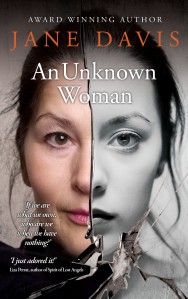 for fifteen years and is proud of all they’ve achieved. They go out into the world separately: Ed with one eye on the future in the world of finance; Anita with one foot the past, a curator at Hampton Court Palace. She is living the life she has chosen – choices that weren’t open to her mother’s generation – working in her dream job, being part of an equal partnership, living mortgage-free in a quirky old house she adores. Her future seems knowable and secure.
for fifteen years and is proud of all they’ve achieved. They go out into the world separately: Ed with one eye on the future in the world of finance; Anita with one foot the past, a curator at Hampton Court Palace. She is living the life she has chosen – choices that weren’t open to her mother’s generation – working in her dream job, being part of an equal partnership, living mortgage-free in a quirky old house she adores. Her future seems knowable and secure.
But then Anita finds herself standing in the middle of the road watching her home and everything inside it burn to the ground. And before she can come to terms with the magnitude of her loss, hairline cracks begin to appear in her perfect relationship. Very quickly it becomes apparent that nothing is as it had seemed. Then, when she returns to her childhood home in search of comfort, she stumbles upon the secret that her mother has kept hidden, a taboo so unspeakable it can only be written about.
I read a quote I liked the other day. “The writer’s job is to get the main character up the tree, and once they are there, to throw rocks at them.” I don’t want to give too much away, but Anita finds one hell of a lot of rocks flying in her direction.
What is the theme of the story and what prompted you to write about this subject matter?
JD: An Unknown Woman is very personal to me. In 2013, I took the decision to cut back on paid work, which meant selling the car and ridding myself of a lot of material baggage along the way. The book is in part an exploration of how our material possessions inform our identities. It begins with a couple standing in the road outside their house watching it burn to the ground. It is very recognisably my house. Then in February 2014, life reflected art/fiction when my sister lost her house and everything in it to the winter floods.
In the book, I ask the question, ‘If we are who we own, who are we when we have nothing?’ Parker J. Palmer described identity as ‘an ever-evolving core within which our genetics, culture, loved ones, those we cared for, people who have harmed us and people we have harmed, the deeds done (good and ill) to self and others, experiences lived, and choices made come together to form who we are at this moment.’ So, in a way, it is quite a reflective novel in which Anita has to revisit her past before she can move forwards. But when she goes home in search of comfort, she not only encounters one of those people who has caused her harm in the past, but stumbles upon the secret that her mother has kept hidden.
There were several sources of inspiration, but one of them was my elderly neighbour who told me his story and said, ‘I’d like you to write about it’. His wife had very much wanted a child, but when their daughter was born, his wife was unable to bond with her. This wasn’t post natal depression, which is relatively common, but an active dislike which only worsened over the years. They never acknowledged it, never spoke about it, but it was always there: the unspoken truth. My neighbour spent his married life trying to compensate, being both mother and father to their daughter. When I put pen to paper, I thought that I was putting one family under the microscope, but several of my beta readers responded with details of very similar experiences, either relating to their relationships with their children or their mothers. They were glad that it had been written about. We hold the mother/daughter relationship in particular in such high esteem that it seems particularly difficult to accept that it’s not always an easy and natural thing. In fact, in many cases it seems to be the very opposite.
What research did you do for this book?
JD: This book is very much a reflection of what was happening in my own life over the fifteen months that I wrote it. Having given up a high-powered job (and the salary that went with it) my life felt as if it had shrunk.
With many adults still living at home with their parents at the age of thirty, and with life expectancy on the increase, middle-age, too, seems to have shifted. In my late forties, logic tells me that I am middle-aged, and yet in many ways, with less responsibility than I’d had since starting work at the age of sixteen, it is as if I’ve fallen out of adulthood. I wanted to write something that reflects this new state of affairs. The childless forty-something-year old, who is still thinks of herself (and is thought of) as being young, who has perhaps paid off the mortgage, but still goes to gigs.
The main character, Anita, is the same age that I was at the time I began to write the book. Her personal circumstances are also similar to mine. She lives in my house, for example. She has been living with a man she is not married to for fifteen years and they have made the decision not to have children. And even though she believes that this was the right decision for them, it isolates her from her contemporaries, whose children are their main focus. She feels cut off from the life she imagined for herself since the age of ten.
During the writing of the book I began to experience severe panic attacks, something I thought I had grown out of (I am told they that often return with the menopause), so Anita’s anxiety attacks are mine.
I had a very happy few outings to Hampton Court Palace, quizzing the staff about their jobs and studying ancient graffiti, which I find endlessly fascinating. It’s strange how our attitude to graffiti changes when it is historical. I also went to a couple of evening events to get a feel for them, and for the opportunity to see the Palace at night. One thing that I didn’t do that I’d really hoped to was manage to see The Portrait of the Unknown Woman, which is Anita’s obsession. It is housed in an area that is not normally open to the public – although, unbeknown to me, it actually was open on one of the days I visited! Although the identity of many of the people in portraits in the palace is unknown, this particular one has attracted so many controversial theories because it was previously displayed under the title Queen Elizabeth In fanciful Dress. It has also has been extensively altered. http://goo.gl/A5IXyG
Do you prefer to write one sex or the other? And, if so, why?
JD: I write from multiple viewpoints, and so routinely write as both men and women. There are challenges about writing from a man’s  perspective. Some of them are based on the myths planted in our heads by women’s magazines – about how many times a day men think about sex, for example. When I’m not sure how to approach a topic, I might use my partner as a sounding board, or I turn to books. I also rely on gut feeling about how much detail people actually want to read. Something implied can be far more powerful than something that is explicit. I prefer describing emotions rather than mechanics. For example, in my novel A Funeral for an Owl, young Jim undergoes something of a sexual awakening when he meets Aimee White, a girl from the other side of the tracks – smart and what we used to call ‘middle class’. Graham Joyce’s The Tooth Fairy provided a wonderful example of the confusion of finding yourself aroused by someone you are not attracted to. Jennifer Egan’s A Visit from the Goon Squad provided fantastic examples of how to portray flawed characters in a non-judgemental way – people who don’t always understand the reasons why they do things. I am not so convinced as Cosmopolitan is that there is such a thing as a ‘typical male’ but, even if I’m wrong, my characters are not intended to be typical. I hope I managed to sympathetically address the pressures boys feel to behave in a so-called ‘masculine way.’
perspective. Some of them are based on the myths planted in our heads by women’s magazines – about how many times a day men think about sex, for example. When I’m not sure how to approach a topic, I might use my partner as a sounding board, or I turn to books. I also rely on gut feeling about how much detail people actually want to read. Something implied can be far more powerful than something that is explicit. I prefer describing emotions rather than mechanics. For example, in my novel A Funeral for an Owl, young Jim undergoes something of a sexual awakening when he meets Aimee White, a girl from the other side of the tracks – smart and what we used to call ‘middle class’. Graham Joyce’s The Tooth Fairy provided a wonderful example of the confusion of finding yourself aroused by someone you are not attracted to. Jennifer Egan’s A Visit from the Goon Squad provided fantastic examples of how to portray flawed characters in a non-judgemental way – people who don’t always understand the reasons why they do things. I am not so convinced as Cosmopolitan is that there is such a thing as a ‘typical male’ but, even if I’m wrong, my characters are not intended to be typical. I hope I managed to sympathetically address the pressures boys feel to behave in a so-called ‘masculine way.’
In the same novel, the main challenge for me was writing a fight scene for my teenage mixed-race character, Shamayal. That was totally new territory. My intention was to create a sense of fear rather than to be graphic (this wasn’t a book about sex and violence.) My editor’s advice was to make it even more visceral.
Whether male or female, you have to be confident in the character that you are writing. You can only do that by getting right inside his or her head and understanding what made him what she is. In fact, this was never so apparent to me as when in An Unchoreographed Life, I wrote from the perspective of a six year old girl. Some of my beta readers thought she was too old for her age, some thought she was too young. One friend with a child of a similar age made the very sensible comment, ‘Of course, we only know what comes out of their mouths. We don’t know what goes on in their heads.’ Novels are the only narrative form that transport the reader directly inside the character’s head, describing their conflicts, emotions and thoughts from the inside.
The male character in An Unknown Woman is Ron, a man in his late seventies. He’s, someone who experienced the Liverpool Blitz before being evacuated, who has carried his own guilty secret for the whole of his life, and who shelters his wife’s guilty secret. In many ways, he’s an everyman, but he is also heroic to me because his marriage is a model of enduring love, and despite not being married myself, that’s something I have a great deal of respect for.
Where is the novel set and why did you choose to set it there?
JD: The novel has several settings. Some of the action takes place in Hampton Court Palace, where Anita works as a curator (and is also close to where I live). It somewhere that I feel people can imagine – and of course, the recent dramatisation of Wolf Hall helps with that. I think that my job is to zone in on the detail. There is a processional passage in the Tudor Palace and, on a deep windowsill, there is a graffiti outline of a hand. Somehow, despite the fact that we’ll never know the identity of this person, it seems far more personal than carving your initials. In fact, I found it very moving. My instinct on seeing it was to put my hand within the outside of the hand, and I could see from the sheen of the stone that many others had done this before me, so there is a whole trail of connectivity between me and whoever it was that left their mark.
Anita’s hometown is Liverpool. Since it’s also my partner’s hometown, it’s a city I have visited often over the past fifteen years and I’ve witnessed the changes, including the sandblasting of the grime that had blackened the frontage of the famous Three Graces, the redevelopment of the dock area and, most recently, the construction of the new museum and Liverpool One. Anita has a complex relationship with her hometown. The level of unemployment in the seventies and eighties was such that careers’ advice was ‘Leave – and while you’re at it, lose the accent.’ The city Anita returns to as an adult is a very different place. Each time she visits, she experiences a complex range of emotions: the pull of the Mersey flowing in her veins, guilt of having abandoned the place, and a sense of no longer belonging. She certainly questions whether she has any right to feel proud of her cultural heritage.
Ron’s relationship with the city is different as I hope this passage illustrates:
“There was something transportative about living in the same city all of your life; walking around familiar geography, knee-deep in the history of the place. And superimposed over a street map carried both inside and outside his head (the then and the now), were the milestones of his own life. Now he was older – with less to look forward to, he supposed – Ron spent a great deal of time in the past. In a single half hour, he might be a child crying in a damp cellar, clasped to his mother’s chest; a child of five sitting on the clean-swept step of his grandmother’s terraced house, while the adults crammed themselves into the front parlour, discussing things that didn’t concern him. He might be a school-leaver, discovering the pleasure of smoking illicit ciggies on park benches (illicit because he’d bought them with coins dropped into his cap while he pretended to be collecting for the Sailors’ Home).
Once, an office worker stopped and asked for a light. Before Ron could reach for his matches, she scooped back her hair, and bent down to touch the end of her cigarette to his, her blouse falling open as the embers flared. A quick thank you, smoke coiling in his face and him left with a grin that made his jaw ache all afternoon.
Passing Queen Square, he might be a boy weaving through the fruit and vegetable market, snaring himself a crisp apple when no one was looking.
He might be a lad of fifteen (though, with his first paid job, he thought himself a man), the pads of his fingers permanently ink-stained, parcel string cutting off his circulation as he hauled bundles up from the print rooms where the giant presses roared, sending reams of paper flying, ready to be cut and folded. Everything a great hurry, accompanied by hollering and the sound of running feet. From there, the papers would be rushed to station forecourts, newsstands and corner shops. Taking his father’s advice, he kept one eye on the job he wanted: the spectacle-wearing writers, banging out copy in smoke-filled offices, untended cigarettes dripping from the corners of mouths. Writers impressed girls. Become one, and he might get a date – that was his thinking. “Yes, Sir!” he shouted on cue, talking a good line; making sure he was in the right place when errands needed to be run. And when they said, “I think we might have something for a bright lad like you,” his chest swelled with anticipation.”
Thank you, Jane, for your honest answers to my questions. They will give readers an insight into your own experiences as well as the novel. Good luck with your latest release, An Unknown Woman.
Readers can learn more about Jane by visiting her website and Facebook and Pinterest pages. They can also follow her on Twitter @janedavisauthor. The book is available on Amazon as an ebook and a paperback.

